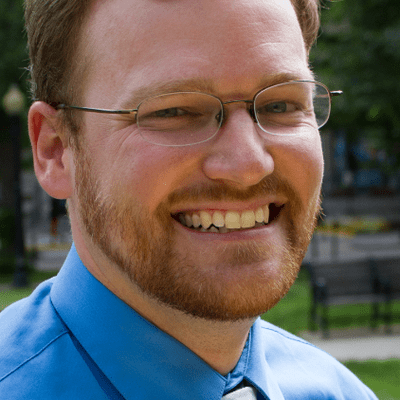Introduction
Editor’s note: The Center for Public Integrity is tracking political advertising in races for the U.S. Senate and state-level offices. Use these two, interactive features — with new data every Thursday — to see who is calling the shots and where the money is being spent.
When it comes to winning U.S. Senate races’ television ad wars, Team Blue has seized the advantage a month before Election Day.
Democratic candidates and their liberal allies last week aired more TV ads than their conservative opponents in seven out of nine top battleground states, according to a Center for Public Integrity analysis of preliminary estimates from Kantar Media/CMAG, an advertising tracking service.
Democrats proved particularly dominant in the U.S. Senate races being waged in Alaska, Georgia, Louisiana and Michigan, where they bested Republicans by sponsoring hundreds more TV spots throughout each state, the analysis indicates.
At the beginning of September, Democrats were producing more TV ads than Republicans, overall, in key Senate battleground states. As September wore on, however, the GOP ate away at those leads. Last week represents a dramatic shift in that dynamic back toward a Democratic advantage. Whereas the Democrats’ lead in TV spots during most of the election cycle have been relatively modest, the left’s ad buys last week created a large gulf with its conservative opponents.
Non-candidate committees —party organizations, super PACs and nonprofit groups — led the early October advertising spree.
The Democratic Senatorial Campaign Committee alone sponsored about 6,300 ads last week across nine states — from Alaska to North Carolina — buoyed by a nearly $25.3 million cash reserve and $5.1 million in debt going into September. The National Republican Senatorial Committee, at more than 2,400 ads across five states, placed a distant second. The NRSC reported several million dollars less on hand heading into September — about $19.9 million — but no debt.
Liberal super PAC Senate Majority PAC, at about 2,000 TV ads across five Senate races, last week led all super PACs and nonprofits, which each may raise and spend unlimited amounts of money to advocate for or against candidates. The group’s largest donors this year include billionaire environmentalist Tom Steyer, media mogul Fred Eychaner and former New York City Mayor Michael Bloomberg.
That a super PAC supporting Democrats is trouncing other non-candidate groups in political messaging illustrates how intimately liberal politicos have embraced the political spending freedoms created by the Supreme Court’s Citizens United v. Federal Election Commission decision of 2010, said John Carroll, a mass communications professor at Boston University and media analysis for Public Radio International’s “Here and Now” show.
While Republicans grabbed an early and clear spending advantage over Democrats immediately after the Citizens United ruling, Democrats are now “beginning to beat Republicans at their own game,” Carroll said.
And they’re not conserving resources until the very end of the election to make a splash, given that Republicans have a good chance of capturing the six seats they need to win a Senate majority.
“It’s a concession to reality — they can be holier than thou and poorer than thou, and they’re not willing to do that,” Carroll said. “Being against big money was good for rallying the faithful, but [Democrats] are now in for a dime, in for a dollar.”
Related: Big money is also being spent in elections for state-level positions, including millions from groups that need not disclose their donors.
In both Alaska and Louisiana in particular, embattled Democratic senators continued to leverage their vast campaign war chests to their advantage.
About 3,700 TV ads aired last week in Louisiana, and Democratic Sen. Mary Landrieu’s campaign accounted for nearly two-thirds of that sum. Her primary challenger is GOP Rep. Bill Cassidy, who has led in recent polls.
In Alaska, meanwhile, about 60 percent of the 3,000 TV ads aired last week were sponsored either by Democratic Sen. Mark Begich or groups supporting his candidacy, such as a super PAC called Put Alaska First and the DSCC. Polls there show a tight race between Begich and Republican Dan Sullivan.
The GOP can take solace in two U.S. Senate races — those in Arkansas and Kentucky — where conservatives last week edged liberals in overall TV ads, according to the analysis of Kantar Media/CMAG data.
In Arkansas, Republican U.S. Senate candidate Tom Cotton and groups supporting his candidacy aired about 25 percent more TV ads than Democratic Sen. Mark Pryor and his allies. Overall, about 4,100 ads aired in Arkansas and Team Cotton accounted for about 57 percent of them — about one pro-Cotton or anti-Pryor ad every 4 ½ minutes.
Conservative groups such as super PACs American Crossroads and Freedom Partners Action Fund were responsible for about one of every three ads aired on TV in Arkansas last week – about the same number of ads as Pryor’s campaign aired.
Meanwhile, in Kentucky, Senate Minority Leader Mitch McConnell battled Democratic challenger Alison Lundergan Grimes. The state ranked No. 2 last week among all U.S. Senate races in terms of TV ads, with about 6,400 aired, according to the Center for Public Integrity’s analysis of Kantar Media/CMAG data.
The North Carolina race, where incumbent Democratic Sen. Kay Hagan faces GOP state House Speaker Thom Tillis, ranked No. 1, attracting about 7,300 TV ads last week. That amounted to more than seven ads every 10 minutes for viewers in the Tar Heel State.
Along with McConnell and Hagan, Democratic Sens. Mark Warner of Virginia and Mary Landrieu of Louisiana ranked tops among Senate candidates nationwide in terms of total TV ads aired by their own campaign committees, Kantar Media/CMAG data shows. In each case, the four candidate’s own committee ran between 1,600 and 2,000 TV ads last week.
In a sign of what could be Republican Terri Lynn Land’s waning U.S. Senate fortunes, the Michigan candidate’s campaign committee ran just 425 TV ads last week. That’s less than nearly 600 ads super PAC Ending Spending Action Fund ran in support of her candidacy. But it’s more than her own party sponsored: no GOP party committees aired TV ads on her behalf last week.
Overall, more than 56,000 TV ads ran from Tuesday, Sept. 30, through Monday, Oct. 6, according to a Center for Public Integrity review of Kantar Media/CMAG data. Nearly three-fourths of them aired in nine battleground states that could determine whether Democrats or Republicans control the U.S. Senate next year.
No single television station aired more U.S. Senate-specific ads than WMUR-TV 9 in New Hampshire — an ABC affiliate and the Granite State’s lone network affiliated outlet.
With an estimated 757 such ads last week, WMUR easily surpassed runners-up WHO-TV 13 in Des Moines, Iowa; KUSA-TV 9 in Denver; and KTUU-TV 2 in Anchorage, Alaska.
Incumbent Democratic Sen. Jeanne Shaheen accounted for 220 of WMUR’s Senate-focused ads, while Republican challenger Scott Brown accounted for about 200, including more than two dozen produced in conjunction with the NRSC.
Granite State viewers were also blitzed by Democratic super PAC Senate Majority PAC, the DSCC, conservative super PAC Ending Spending Action Fund and the U.S. Chamber of Commerce.
“The dynamic is unique and different and the number of third-party ads in this race also adds a new layer of intensity and exposure, which is unprecedented,” said Scott Spradling, a New Hampshire public relations and political consultant who spent 12 years at WMUR as a news anchor and political director.
Hearst Corporation-owned WMUR — like any television station or media group experiencing an influx of political ads — is probably all too happy to receive them, Spradling added.
“A contested election year with so many well-funded candidates and groups does nothing but benefit the bottom line financial situation of media,” he said.
Read more in Money and Democracy
Money and Democracy
State politics findings you may have missed
The Center’s best state politics stories from 2014
Money and Democracy
Koch-linked organization uses ‘dark money’ to fight political disclosure
Most of the $13 million raised by American Commitment has come from three Koch-backed groups


Join the conversation
Show Comments